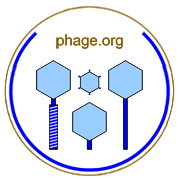

Bacteria either embedded in semi-solid environments (e.g., agar-containing media) or spread on the surface of more-solid media and which can serve as indicators (that is, hosts) for phage plaque formation.
Lawns begin with bacteria application, depending on the state of the bacteria may or may not go through a lag phase, and eventually enter into stationary phase. The bacteria within lawns grow as microcolonies and the fewer bacteria that a lawn is initiated with then the larger those microscolonies will grow. Lawns will be more robust, growing longer the thicker the bottom agar layer. These factors generally can have an impact on phage plaque formation.
As lawns consist of bacterial microcolonies, rather than representing homogeneous dispersions of bacteria, plaque formation can be viewed as involving a combination of virion diffusion between microcolonies and phage penetration into as well as exploitation of individual bacterial microcolonies.
For more on this topic, see Wikipedia, Google, and PubMed. Contact web master. Return to terms.











